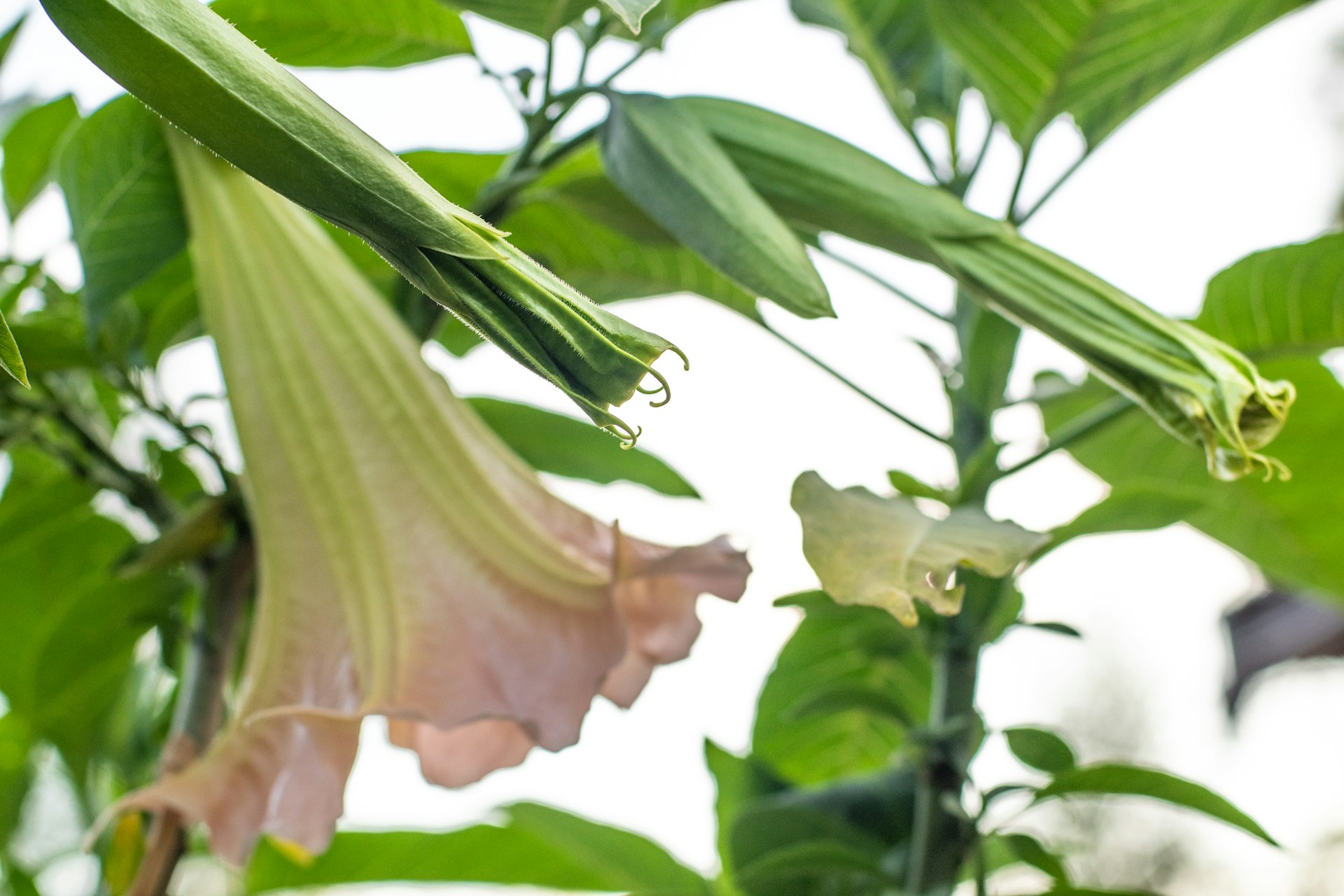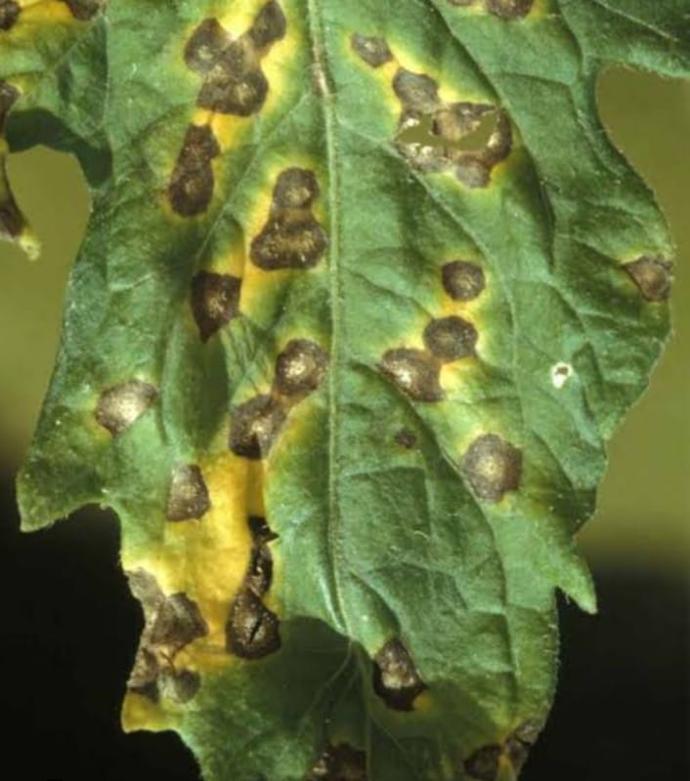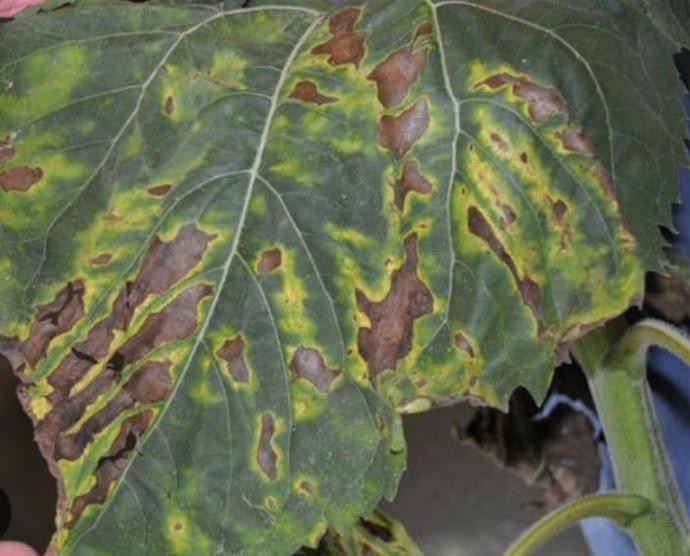Datura Plant
Datura, also known as Jimsonweed, is an outdoor flowering plant. Plant in well-draining soil with full sun exposure. Water consistently, and prune to shape the plant. Note: Datura contains toxic substances; handle with care and keep out of reach of children and pets.

Habit
Shrub
Height
50 to 150 cm
Growth
Rapid
Soil
Well-drained, sandy loam
Shade
Full Sun
Moisture
Moist
Edible
No
Medicinal
Yes
Origin
Americas
Climatic Condition
Warm, subtropical
Temperature (°)
20 to 35
Humidity (%)
40 to 70
Potting media
Organic-rich mix
Fertilizers
Minimal fertilizer
Watering
Low watering, drought-tolerant
Plant Weight
100 to 500 g
Flowering Time
Summer to Fall
Soil Ph level
6.0 to 7.5
Water Ph level
6.5 to 7.0
Soil EC
0.3 to 1.0
Yield Per Plant
3 to 5 flowers per plant
NPK ratio
10:10:10
life Span
Annual
Health Benefits
Used in traditional medicine; toxic if ingested.
Suggested Grow Media or Potting Mix ?
50% loamy soil, 30% compost, 20% sand
Suggested Fertigation/Fertilizers
Fertilize every 4 weeks with a balanced fertilizer.
Common Diseases and Remedies
Verticilum wilt , Bacterial leaf spot .
Wilting and yellowing of leaves . Water soaked lesions on leaves .
Soil solarization , proper sanitation and neem oil , garlic spray .
HEALTH BENEFITS
- Traditional Use in Ayurveda: Used in small medicinal doses for asthma and pain relief.
- Antispasmodic: Can relieve muscle spasms (with extreme caution due to toxicity).
- Hallucinogenic Properties: Used in rituals but highly dangerous.
What Is An Datura Tree?
Datura is a flowering plant of the Solanaceae family (Solanaceae). It has many common names, including datura, jimson weed, devil's sling, and devil's trumpet.
Some species of Datura are psychoactive and have been used in witchcraft and sorcery in many cultures. Some Native American groups use certain Datura species as entheogens.

What Are The Different Types Of Datura Plants?
1.Datura stramonium
Also known as devil's trumpet, devil's weed, Jamestown weed, stink bug, grasshopper, and prickly pear.
2. Datura wrightii
Sacred Datura.
3. Datura kymatocarpa
An annual plant native to Mexico that is classified as a variety of Datura.

How to care for Banana Plants ?
1. Location
Plants of the Datura family grow best in full sun and well-drained soil. It can also grow in partial shade.
2. Sunlight
Datura plants grow best in full sun, but may also grow in partial shade.
3. Hydration
Datura requires regular watering. If you don't get enough water, you may feel groggy and grumpy.
4. Soil
Plants of the genus Datura can grow in almost any type of soil, but grow best in humus-rich loam that is regularly moistened.
5. Nutrition
Datura plants respond well to a monthly application of liquid fertilizer. Sometimes it can also be treated with phosphorus-rich fertilizers.

6.Issues
All Datura species are highly toxic and psychoactive. Seeds and flowers are especially dangerous. Ingestion can cause respiratory depression, arrhythmia, fever, delirium, hallucinations, anticholinergic syndrome, psychosis, and death.
Datura seeds have analgesic, anthelmintic, and anti-inflammatory properties and are used to treat stomach and intestinal pain caused by insect infestations, toothaches, and inflammation-related fevers.

FAQs About Growing Datura
1.What drug is made from Datura?
Its leaves, containing hyoscyamine and atropine, can be used as an immensely powerful mind-altering drug
2.Is Datura plant good for home?
Datura plant at home vastu dictates, it is an especially poisonous plant and is best avoided.
3.What type of poison is Datura?
Datura stramonium (DS) is a widespread annual plant, containing atropine, hyoscyamine, and scopolamine, which can produce poisoning with a severe anticholinergic syndrome.
4.Is Datura unisexual?
It contains both androecium and gynoecium in the same flower. Hence, it is a bisexual flower
5.What chemical is in Datura?
Datura species are particularly rich in tropane alkaloids.

